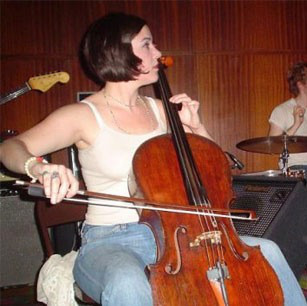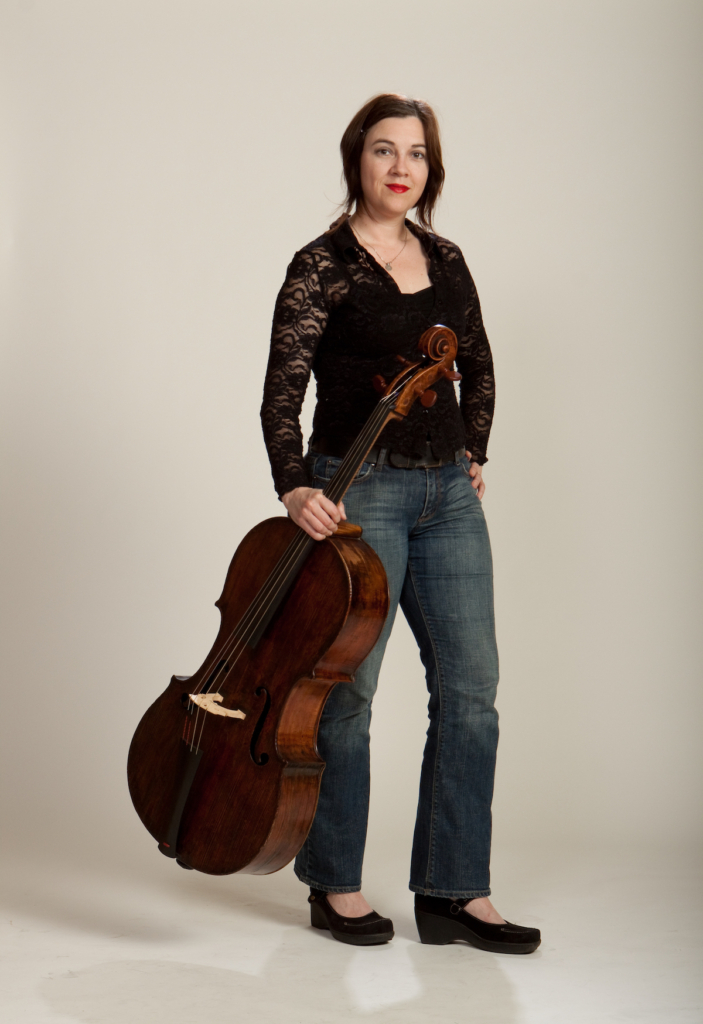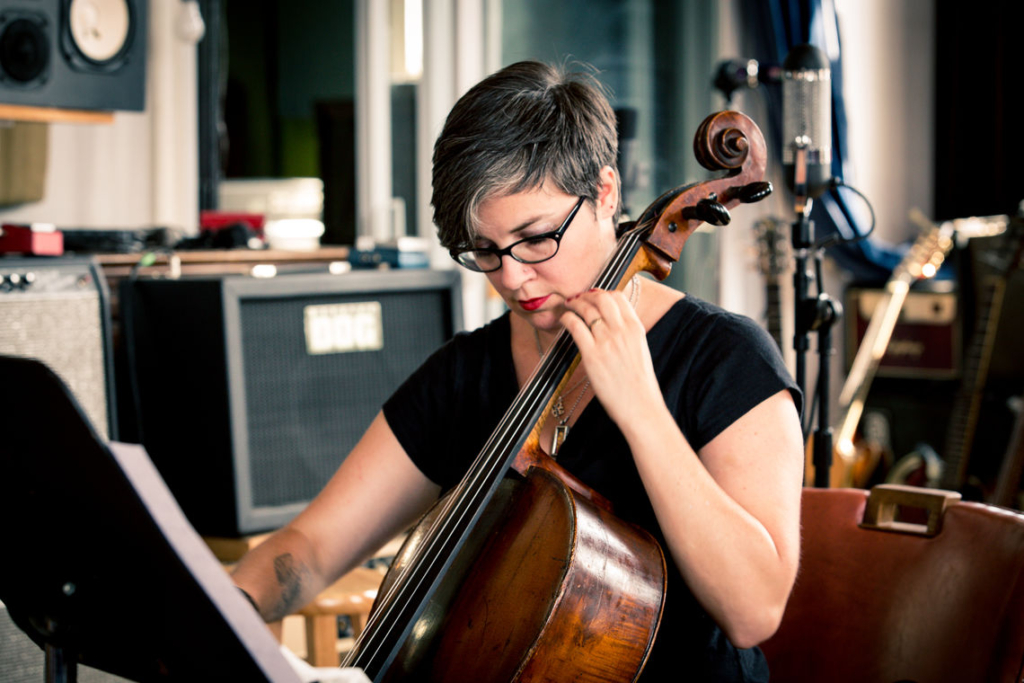First published in March 2007
A life on the road finally caught up to Eve Miller, as it has so many musicians. It happened on a rainy Monday afternoon at a rest stop off I-5 outside Bellingham, Washington.
A baroque cellist & rock-band musician
Eve Miller, a cellist with Tempesta di Mare, is also a well-known, highly regarded player in alternative rock bands. On that day, she was touring with Rachel’s, a modern instrumental group she’s played with for fifteen years.

“When you’re on tour,” Miller explains, “the food’s usually really bad and there’s not a lot of time for exercise. You have to work to keep up your health. We usually take opportunities at rest stops to jump up and down, run around with a soccer ball.”
That day, the effort backfired. “It had rained the night before, I was running full speed across the grass, I went to kick the ball and my feet just went out from under me. I guess I threw my arms out to catch myself,” she says.
Miller broke her left arm very badly: three breaks in the humerus and extensive radial nerve damage. Her hand and forearm were paralyzed.
The slow pace of recovery
The months of rehabilitation that followed, with no guarantee of recovery, were grueling. It took four months before she could move her hand at all. Three more months passed before she could play again, a potentially devastating layoff for a professional musician who normally practices many hours a day.
Miller approached rehab with the same kind of intensity she approaches music, spending hours a day on physical therapy combined with shiatsu, acupuncture, herbal medicine, energy work, and the massage technique called Rolfing, to which she gives particular credit. It worked. “It’s amazing how pieces of the body can regenerate,” says Miller with curiosity and wonder.

“I Loved It from the Beginning”
Miller brings the same qualities to music. She trained as a mainstream classical cellist. But while a student at Baltimore’s Peabody Conservatory, she was introduced to baroque performance practice by Ann Marie Morgan—former Tempesta di Mare principal and last December’s viola da gamba soloist. “I loved it, I loved it from the get-go,” says Miller about baroque cello.
Also while at Peabody, she met fellow-student, violist Christian Frederickson. Frederickson had founded Rachel’s with visual artist Jason Noble and Miller joined them. “At the time, Jason was doing prog rock: weird time signatures and that kind of thing. In’92, we started making recordings in peoples’ basements and just went on from there,” she says.
Rachel’s went on to receive increasing critical regard and an enthusiastic fan base. Recent recordings include Systems/Layers, a music/theater piece created in collaboration with the Saratoga International Theater Institute (SITI Company). Miller also played cello for many years in the singer/songwriter-led alternative rock band, Matt Pond PA.
Rock cello? Not that unusual. Cellos have had a place in rock as far back as the early Beatles and “Yesterday.” But performing with acoustic strings in live rock club settings is unusual.
“Wrangling the sound issues of acoustic versus electric instruments, cello versus drum set, it’s challenging,” she says with relish.

“Wrangling the sound issues of acoustic versus electric instruments, cello versus drum set, it’s challenging,” she says with relish.
But the rock’n’roll lifestyle was taking its toll on Miller. For five years, she toured almost 180 days a year. It wasn’t just the non-stop clubs. “When you’re away, you lose touch with other people. When you’re home more, there are more opportunities to collaborate, to work with different people in different ways,” says Miller.
Recovered, she’s as busy as ever. She just worked on a score for King Lear with director Jeffrey Frace and Christian Frederickson from Rachel’s, she’s playing with other bands, she’s putting together an album of songs for children, and after having been benched during most of Tempesta’s last season, she’s especially enjoying playing with them this year.
Playing in a baroque orchestra is different from her other work, but it has its own rewards. “What I like so much about Tempesta is that it’s not about just giving a straight rendition of what’s on the page. Even though the group is very well-rehearsed, spontaneous things happen in performance,” she says. “It’s all about listening and being in touch with the other musicians, which is fantastic in this orchestra because there’s no conductor. You’re constantly shifting your attention from Gwyn to Emlyn, to the oboe, to how your part fits in with the violas who are standing right behind you.”
“There are always those surprising moments when you’re like, wow, what are they doing over there!” says Eve Miller. “Then it comes together.”
She’s back.
Anne Schuster Hunter is a writer, teacher, and art historian in Philadelphia. She conducts a creative writing workshop at Temple University Center City. Find out more: anneschusterhunter.com
